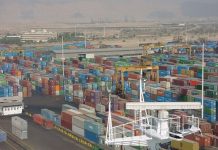ISLAMABAD: Pakistan’s handicraft exports to global market need a boost, WealthPK reported on Monday, quoting business tycoones.
Handicrafts are products made by hand with simple tools and without the use of sophisticated machines.
These items represent regional, cultural, and traditional norms of a certain geographical location.
The importance of this industry cannot be overstated because it has the ability to aid in a country’s economic development by offering job opportunities and accumulating foreign exchange with the minimum capital investment.
The growth of this industry can help promote not only economic activity, but also a country’s soft image abroad.
According to Expert Market Research, the worldwide handicraft market reached $647 billion in 2020. Demand for handicrafts in the global market is expected to grow 10.9% by 2026. People in the North American region have a high demand for handicrafts, and they spend a lot of money on handmade jewellery and garments.
China, Japan, Korea, as well as other Asia Pacific countries, are the world’s leading exporters of handcrafted goods.
Pakistan’s contemporary economy is built on a rich and diverse cultural legacy, as well as a creative and artistic heritage. According to a report by the British Council on Cultural and Creative Sectors in Pakistan, craft and allied industries employ 15% of Pakistan’s population.
This is an important sector in terms of providing job opportunities for women. A country’s economy cannot make progress without women participation in economic activity. Handicraft is the only industry in which female participation is directly linked.
Women’s contribution in this segment can be boosted through skill development and incentives, WealthPK reported.
As women in Pakistan make up 48% of the total population, they have a significant role to play in boosting the economy. Women’s active participation in the economy increases the country’s labour force participation, increases gender empowerment, alleviates poverty and earns foreign exchange.
Women’s participation in economic activity in Pakistan, however, is quite low, which must be increased by identifying and addressing the factors keeping them away from jobs.
Pakistan produces a wide range of handicrafts, including textiles, embroidery, beadwork, block printing, patchwork, woodcrafts, pottery, jewellery and stone carving. These crafts portray the 5,000-year-old history of Persian, Greek, and Arab migrants. These crafts are made in many parts of Pakistan, particularly in the country’s rural areas.
They are representative of the region’s distinctiveness and specialties, according to WealthPK.
However, the share of Pakistan’s handicrafts’ exports to the global market is quite low despite the enormous potential, which shows that the industry has not been given the level of attention it deserved.
The country has been unable to focus on promoting entrepreneurship among rural women by providing them facilities of training and finances despite the fact that the handicraft industry is largely concentrated in rural areas. Building capacities of the rural women and helping them establish small-scale manufacturing units will go a long way in not only boosting the incomes of rural families, but also alleviating poverty in the backward and remote parts of the country, WealthPK reported.
Pakistan can certainly learn from the Chinese experience as the latter has become the world’s biggest manufacturer of handcrafted goods, accounting for more than 40% of global trade. Joint ventures between entrepreneurs of Pakistan and China can help promote the handicraft industry and uplift Pakistan’s economy. -INP






